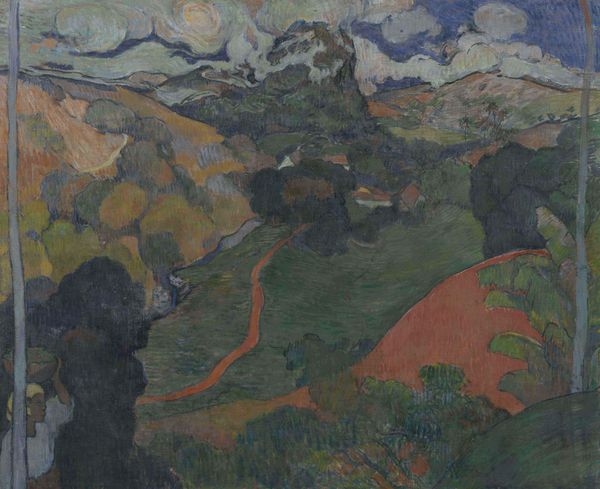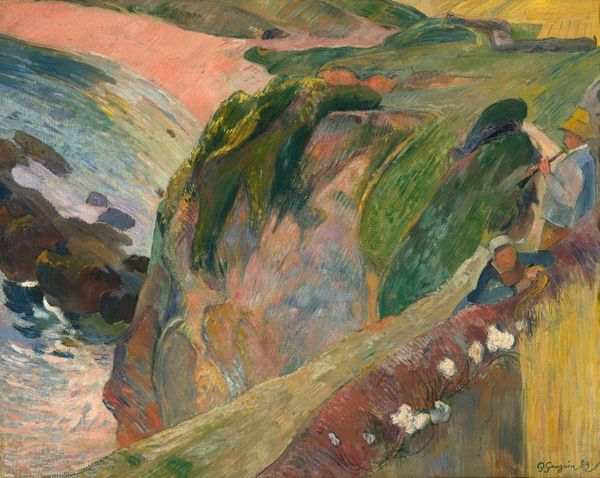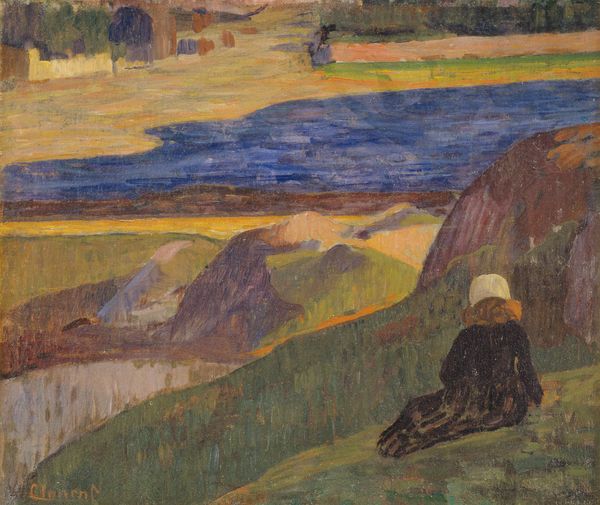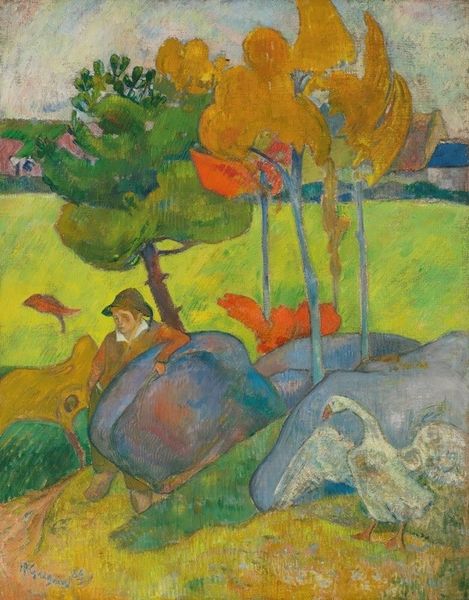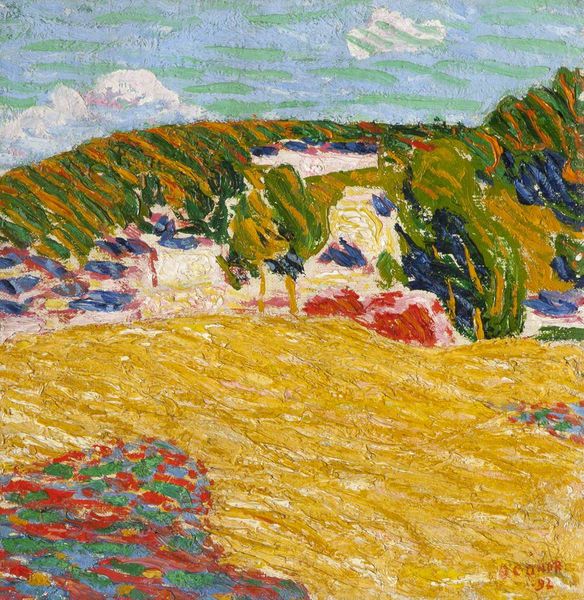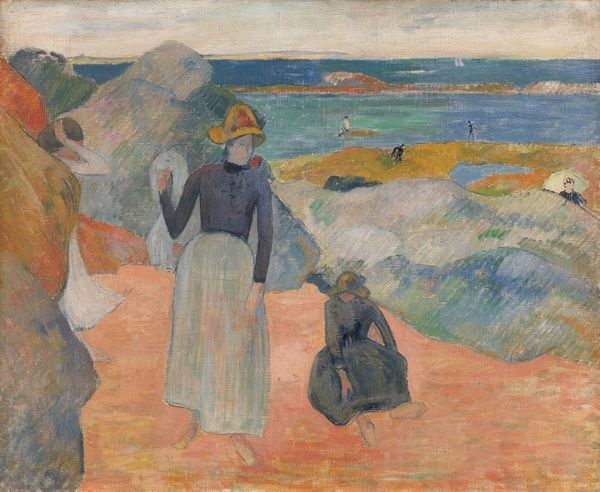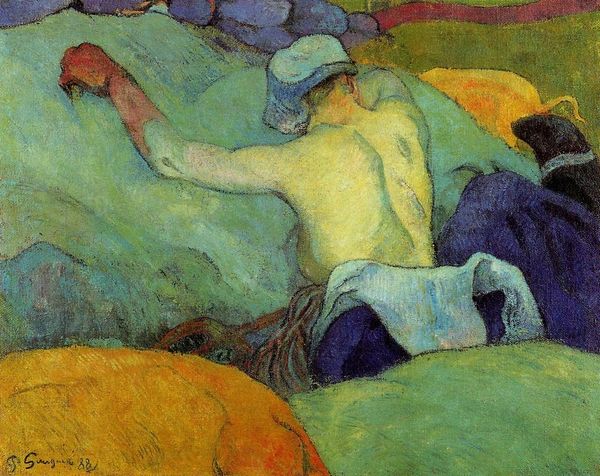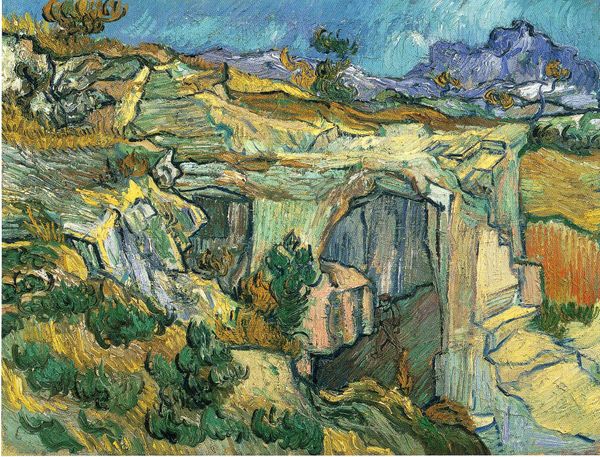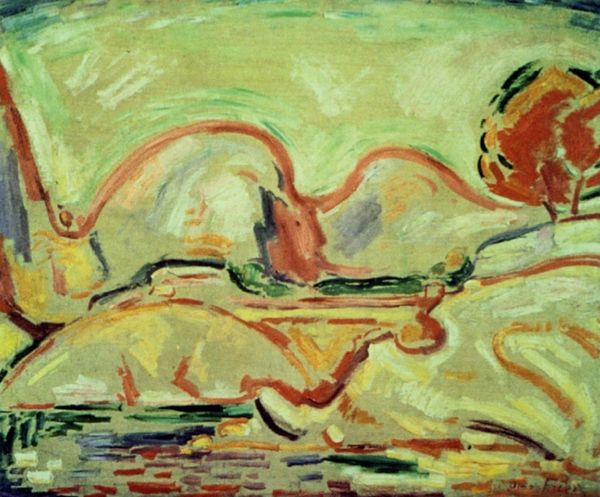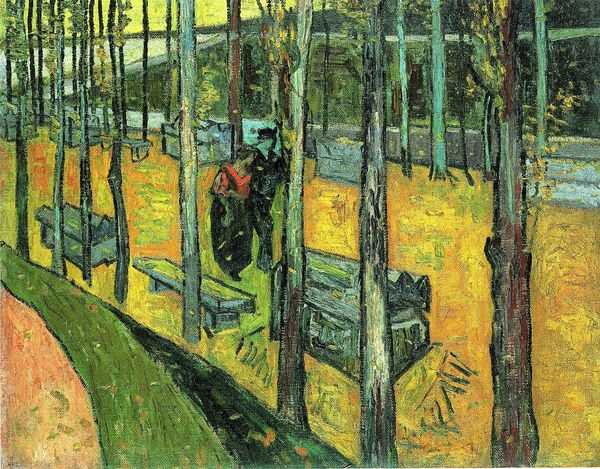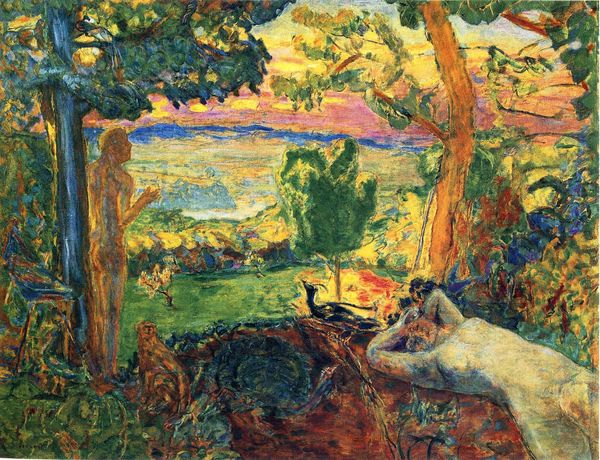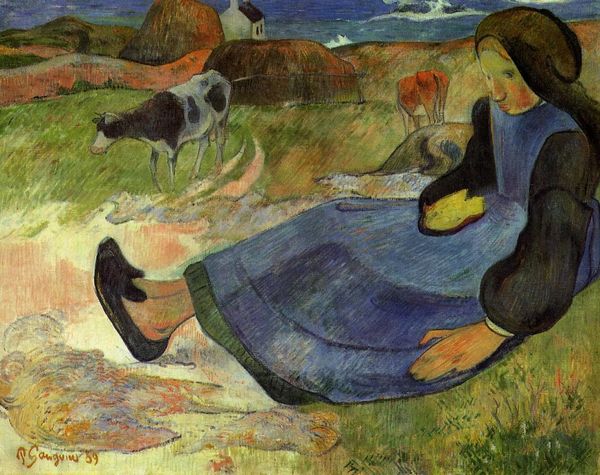
painting, plein-air, oil-paint
#
portrait
#
figurative
#
painting
#
impressionism
#
plein-air
#
oil-paint
#
landscape
#
figuration
#
oil painting
#
history-painting
#
post-impressionism
Copyright: Public Domain: Artvee
Editor: Gauguin’s “Washerwomen in Arles,” painted in 1888, strikes me as a particularly vibrant and almost dreamlike depiction of labor. The colors are so intense. What can you tell me about the context of this work? Curator: Gauguin painted this during his brief but significant stay with Van Gogh in Arles. Consider how this painting engages with the broader societal representation of rural labor at the time. Impressionism often aestheticized scenes of modern life, but how does Gauguin’s post-impressionistic style diverge from that? Editor: It's interesting how the colors and flattened forms move away from strict representation. Does this stylistic choice relate to his artistic and perhaps social goals? Curator: Exactly. Gauguin was less concerned with accurately depicting reality and more interested in expressing emotion and creating symbolic meaning. The strong colors and simplified forms align with his later explorations of Primitivism. How might contemporary viewers have reacted to his portrayal of these working women, especially when contrasted with academic Salon painting? Editor: I imagine they might have seen it as unconventional or even challenging, maybe not refined enough? Especially with his interest in less idealized portrayals of women… Curator: Precisely. Consider the art world dynamics of the time – the push and pull between tradition and avant-garde. The Washerwomen embodies a shift away from the established academic standards and towards something more personal, subjective, and, ultimately, tied to Gauguin's evolving aesthetic and his views on art's purpose. It also raises interesting questions about the romanticizing - or not - of rural life versus the reality. Editor: I hadn't considered the role that art institutions might have had in shaping my expectations of how working women were represented. It sounds like there’s a tension in the piece between the aesthetic and social realms, which is very insightful. Curator: Indeed. Understanding the painting requires not just admiring its visual qualities but also grappling with the cultural context and the evolving politics of representation.
Comments
No comments
Be the first to comment and join the conversation on the ultimate creative platform.
